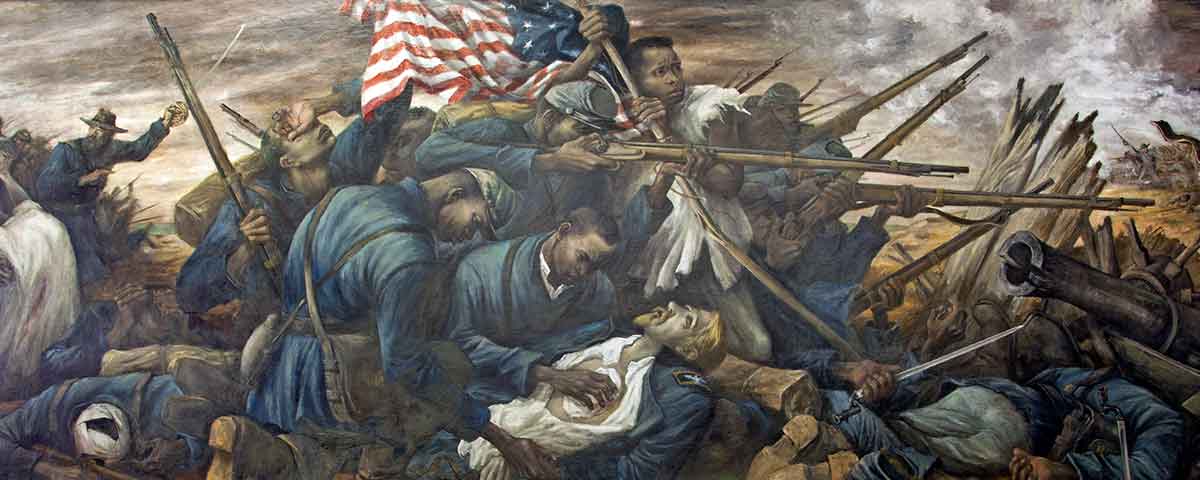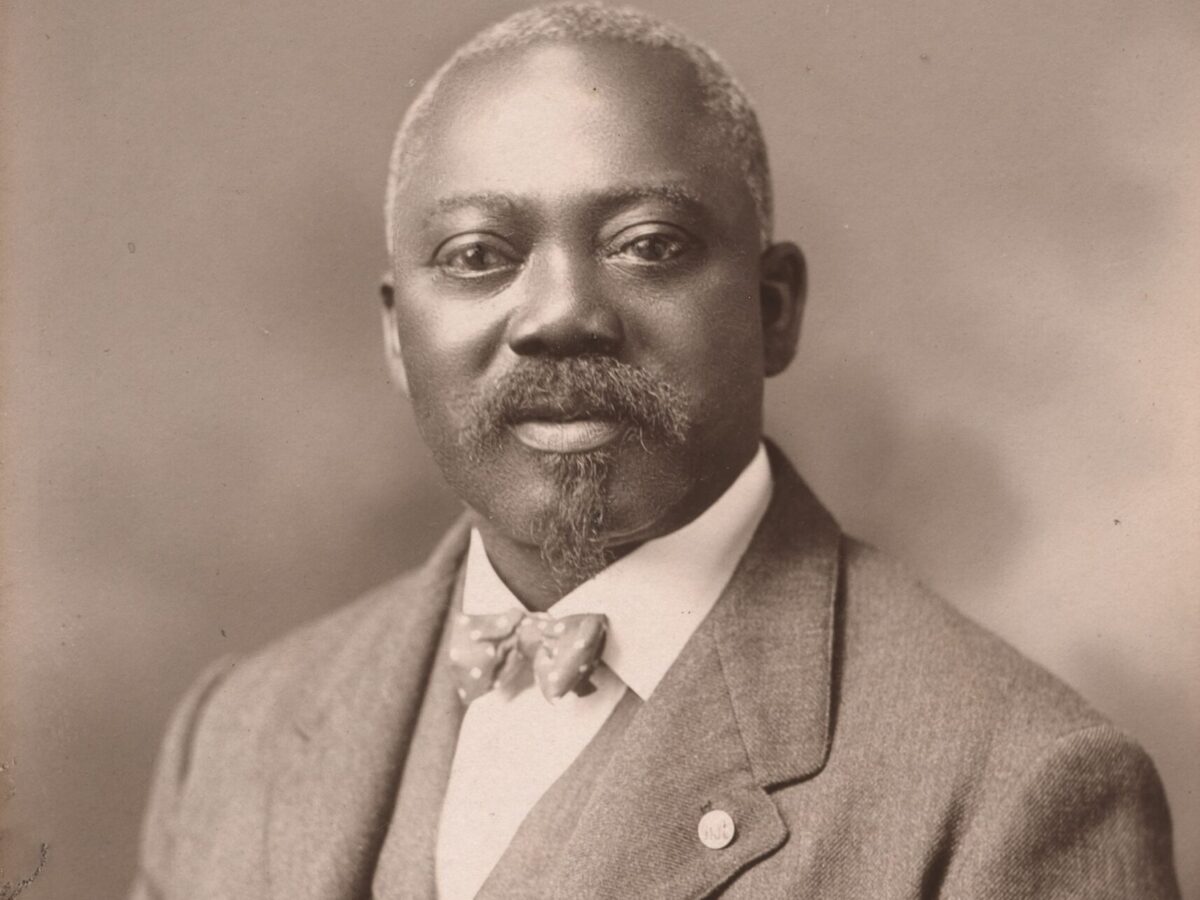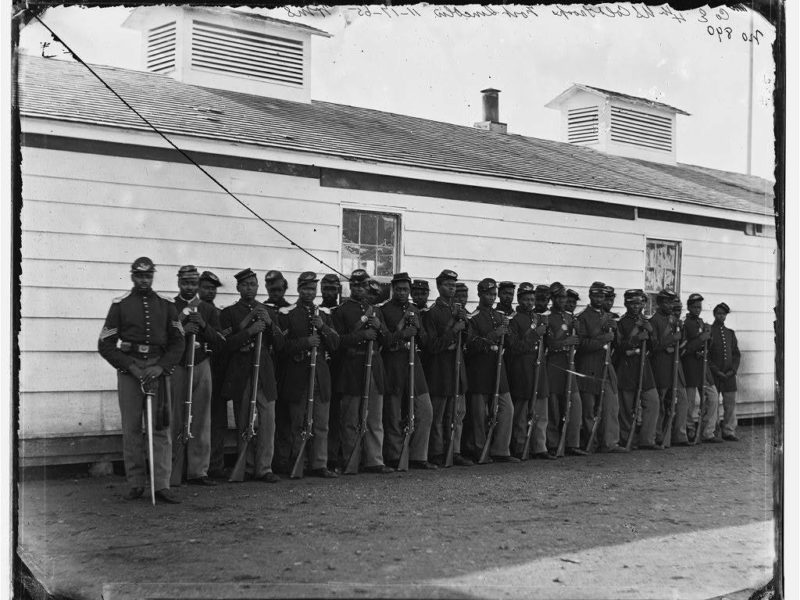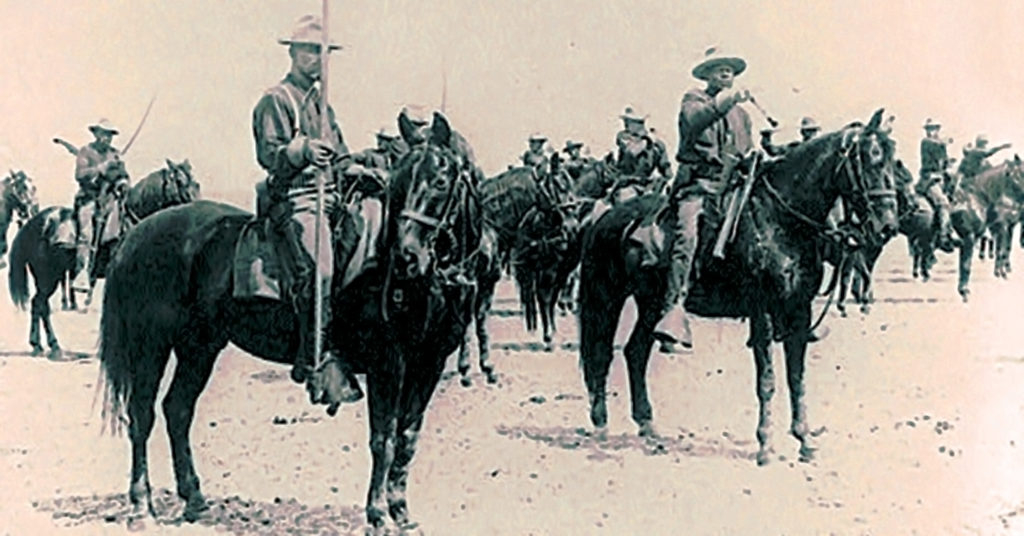The Massachusetts Historical Society’s 2017 acquisition of the long-lost sword Col. Robert Gould Shaw wielded as he led the all-black 54th Massachusetts Infantry’s legendary July 18, 1863, assault on Fort Wagner is one of the most remarkable Civil War relic finds of recent years.
Anne Bentley, the society’s curator of art and artifacts, is particularly euphoric.
“As a curator,” she enthused, “if you’re lucky, once in a lifetime something this significant crosses your desk. This is my once-in-a-lifetime.”
leading the charge at Fort wagner
Recommended for you
This sword figures prominently in the climactic scene of the 1989 film “Glory,” which depicted the 54th’s creation in 1863 and its legendary attack on Wagner, the Confederate bastion on the northern tip of Charleston Harbor’s Morris Island. Shaw, as played by actor Matthew Broderick, leads the assault along the island’s sandy terrain, then brandishes the sword on the fort’s parapet before being killed. Nearly 300 of the regiment’s men and officers were killed, wounded, or captured during the unsuccessful attack that morning. The following day, a Confederate stripped Shaw’s body of his weapons, uniform, and personal effects, then threw his remains into the rifle pits at the base of the fort, along with the bodies of a number of black soldiers from his command. The sword’s whereabouts succumbed to war’s fog.
GET HISTORY’S GREATEST TALES—RIGHT IN YOUR INBOX
Subscribe to our HistoryNet Now! newsletter for the best of the past, delivered every Monday and Thursday.
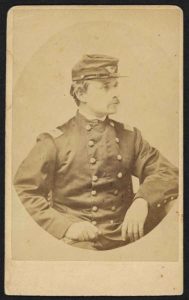
Soon after the war ended, however, Union Brevet Maj. Gen. Charles Paine of Massachusetts, commanding a division of black volunteers, stopped near Goldsboro, North Carolina, with his soldiers for a “frugal lunch.” The owner of the premises where they stopped soon asked if any of them had been at Fort Wagner, revealing that one of his acquaintances was in possession of a sword that had belonged to a Union officer killed there.
Wrote Paine on June 3, 1865: “I heard the other day of the sword of the late Robt. G. Shaw killed at Fort Wagner, in the possession of a rebel officer about sixty miles from here. I sent out and got it; the scabbard was not with it. I am going to send it on as soon as I have an opportunity.”
Paine’s assistant adjutant general, Solon Carter, returned the sword to the Shaw family, receiving this acknowledgment from Colonel Shaw’s father, Boston intellectual and abolitionist Francis George Shaw: “So far as such words may be applied to an inanimate thing it is the weapon which has done most for our colored people in this war, and it is to me likewise as well as to you a source of great satisfaction that it was recovered and restored by officers of colored troops.”
Robert Gould Shaw’s sister, Susanna, apparently gave the sword to her grandson, who hung it on his bedroom wall. Then it again faded from history’s view.
Rediscovered in an Attic
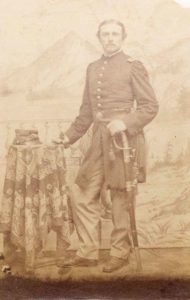
This is the second of Shaw’s Civil War swords the MHS has acquired, along with the one Shaw carried in 1862 as a junior officer in the 2nd Massachusetts Infantry at both Cedar Mountain and Antietam. In January 2017, two Shaw descendants were clearing out their late parents’ home in Hamilton, Mass., to prepare it for sale. From a family with deep patriotic roots, Mary Minturn Wood and Robert Minturn — great-grandchildren of Robert Gould Shaw’s sister, Susanna — contacted Brenda Lawson, the MHS vice president for collections, to inquire about the society’s interest in items they found. Lawson and Bentley went to collect the letters and portraits the siblings had gathered for donation. On leaving, they mentioned that Shaw’s Fort Wagner sword was last seen in the 1800s — and left it at that.
The brother and sister returned to the home, this time exploring a blocked off upper attic chamber.
“Something made me go in there,” Robbie Minturn said, describing how he crawled into the upper chamber to discover more items.
Mary recalled that as she and Robbie looked at the swords among those items, she picked up one that was beginning to rust, had no scabbard, and looked old. Wood e-mailed Lawson.
“We just found another sword …. We found the initials RGS on it, although it is a bit rusty.”
She described the decorative “damanscened” engravings on the sword, which included the American eagle.
Lawson forwarded the e-mail to Bentley, who replied, “OMG Brenda — I think that’s the Wagner sword!!!!!!!”
It belongs in a museum
On April 17, 2017, the Minturn siblings officially deeded the sword to the MHS as part of its large gift of papers and portraits. Bentley and senior cataloguer Mary Yacovone then searched documents, records, and archives to validate that it was indeed Shaw’s Fort Wagner sword. In Shaw family records, Yacovone found a letter suggesting that, in April 1863, Shaw’s uncle, George Russell, ordered an officer’s sword for his nephew from English master swordsmith Henry Wilkinson to commemorate Shaw’s promotion to colonel of the 54th Massachusetts. On July 1, Shaw wrote his father, “A box of Uncle George’s containing a beautiful English sword came all right.”
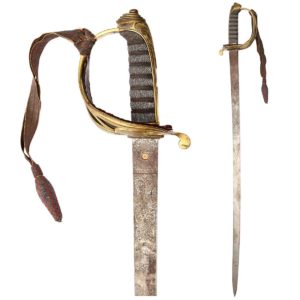
Bentley asked the Wilkinson archivist in England to send a copy of the weapon’s record. It showed that Wilkinson sword No. 12506 was tested for fitness on May 11, 1863, and picked up by an agent for George Russell. The timing was right. In an internal memo, Bentley concluded, “Clearly, this sword was ordered as soon as possible after RGS received his commission as Colonel of [the] 54th Mass. Regiment.”
Bentley then contacted a friend for his authoritative opinion. Erik Goldstein, senior curator of mechanical arts and numismatics at the Colonial Williamsburg Foundation, is an expert on old weapons. Bentley wrote Goldstein, “We’ve got something really big here, if it is what I think it is. I want to pass my findings by you to see if…it’s the real thing.” After further emails, photos, and phone conversations passed between the two, Goldstein unhesitatingly threw his weight behind the sword’s authenticity.
big news
On the 154th anniversary of the Union attack on Fort Wagner, the Massachusetts Historical Society revealed the Shaw sword donation. That day, Steven Smith, past curator of flags at the Massachusetts State House, informed Bentley that he had seen an 1876 letter from abolitionist Lydia Maria Child to poet John Greenleaf Whittier in which she wrote, “I spent last winter with the parents of Colonel Shaw …. The flag of the 54th Regiment was in their hall, and the sword of Colonel Shaw …. It is very handsome, being richly damascened with the United States coat-of-arms, and the letters R.G.S. beneath. It was a present from a wealthy uncle in England, and he received it a few days before the attack on Fort Wagner …. [His mother] said: ‘This is the sword that Robert waved over his followers, as he urged them to the attack.’”
With the description cited in the letter, the sword’s provenance is unassailable.
“I feel very lucky that we realized what we had in our hands, and I’m happy now that it’s in a good place and can be shared with the world,” Mary Minturn Wood said.
Larry C. Kerpelman writes from Acton, Massachusetts about singular moments in American history. His work has appeared in American History, The Boston Globe, and the Chronicle of Higher Education, among other publications. More about him on his website www.LCKerpelman.com.
historynet magazines
Our 9 best-selling history titles feature in-depth storytelling and iconic imagery to engage and inform on the people, the wars, and the events that shaped America and the world.


